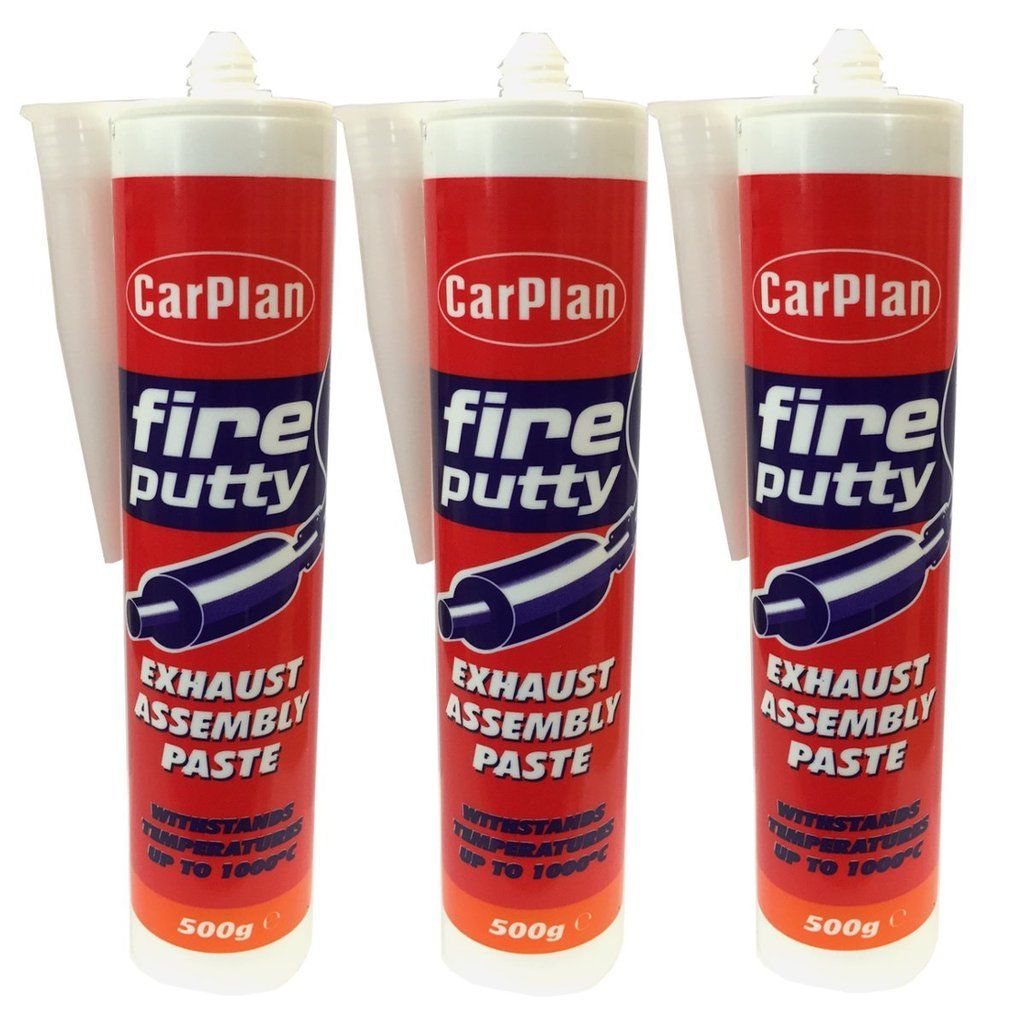
Check to see if the bolts and/or springs are tight around the connection to make sure. Exhaust leaks between connections typically mean a gasket or o-ring seal has failed and will require removal to replace. Once you know where the leak is you can better determine if removal is necessary. From years of experience and having repaired dozens of broken flange and manifold bolts I can tell you that, sometimes, it's better to repair the exhaust system without removing it. Removal sometimes makes it easier to properly repair a leak but it always risks creating another problem, namely a dreaded broken bolt.

Some exhaust leaks can be patched or sealed without removing the exhaust system. Determine if removal is necessary (important) If there is a leak the soapy water solution will create bubbles over it. Next, using a bottle of soapy water, spray the area where you suspect the exhaust leak is located. You can do this using common shop tools such as a leaf blower or air compressor and some duct tape to secure it to the muffler. Let the exhaust system cool down and pressurize it from the muffler end so that you can perform a leak test. A pressure test, sometimes called a smoke test, can help you find the exhaust leak. Repeat the process in different locations on the flange if you can safely reach them. If the sound increases it typically means the leak is on the outside of the connectors, or on the other end of the flange. If the leak is coming from between the flanges the sound of the leak may change or disappear. If possible, and while wearing heat-resistant gloves for safety, use a pair of pliers or vice grips to gently squeeze connecting flanges together. It helps if you move/turn your head as you listen so that you can get a better idea on the direction the sound is coming from. Listen for a pulsing, hissing or ticking sound similar to the noise an exhaust makes but sharper and coming from closer to the engine. Sometimes it's possible to hear where an exhaust leak is located even if you can't see it. The hardest is replacing broken bolts, but check for those too. The easiest fix is tightening or replacing missing hardware so check for that first. Visually inspect any connections for broken or missing bolts or clamps. If it's not, and it isn't most of the time, here are some tips and tricks to help you find the exhaust leak.Ĭheck for missing or damaged hardware. If the leak location is obvious, great, move onto step two. Resist any urge to feel for air movement, the exhaust system gets really hot. With the engine running start by visually inspecting the exhaust side of the engine, the leak location may or may not be visible(usually not).

This is especially common near the engine, however, leaks can happen anywhere. In my experience, exhaust leaks typically happen on the bottom side of pipes and flanges(connections) where moisture collects and causes rust to form. Leak locations are not always obvious until they get big enough that repair may not be possible. Find the exhaust leak (the hard part)īefore you can fix an exhaust leak you have to figure out where it is. The goal of this article is to help you get a little more life out of your exhaust components without welding or spending much money. Replacing the exhaust system on a 2-stroke (or 4-stroke) ATV, dirt bike or side-by-side engine can be expensive, fortunately you may be able to save some money and repair an exhaust leak yourself.


Exhaust leaks rob the engine of performance, are sometimes loud and can cause unsafe operating conditions.
EXHAUST PUTTY FREE
Directions Ensure that the area to be repaired is clean and free from loose rust.Dampen repair area with water and apply with a knife, forcing into whole crack to give strength.If necessary soften putty with water.After use replace lid firmly onto container.Once putty has been applied, start the engine and allow idling for a few minutes in order to accelerate the hardening process and to improve adhesion.When completely set, the exhaust system is ready for normal use.2-stroke exhaust systems are subjected to extreme heat and vibration during regular use which, over-time, can cause exhaust system corrosion and leaks. Applications Sealing of automotive exhaust systems.General adhesive in all high temperature/fire retardant applications.Bonding of insulation materials.Sealing joints in furnaces.Sealing and repointing of open fire heating systems. Ready to use paste.Heat resistant up to 1000☌.Bonds a wide range of materials.Non slip bonding.Asbestos free.Fast setting, especially when heat is applied. The product forms a permanent seal to repair exhaust systems. Wynn's W10804 Exhaust Repair Putty Fast Adhesive Sealant Asbestos Free 1000☌Wynn’s Exhaust Repair Putty is a high quality adhesive/sealant based on sodium silicate and inorganic fillers. Item: 143540386559 Wynn's W10804 Exhaust Repair Putty Fast Adhesive Sealant Asbestos Free 1000☌.


 0 kommentar(er)
0 kommentar(er)
